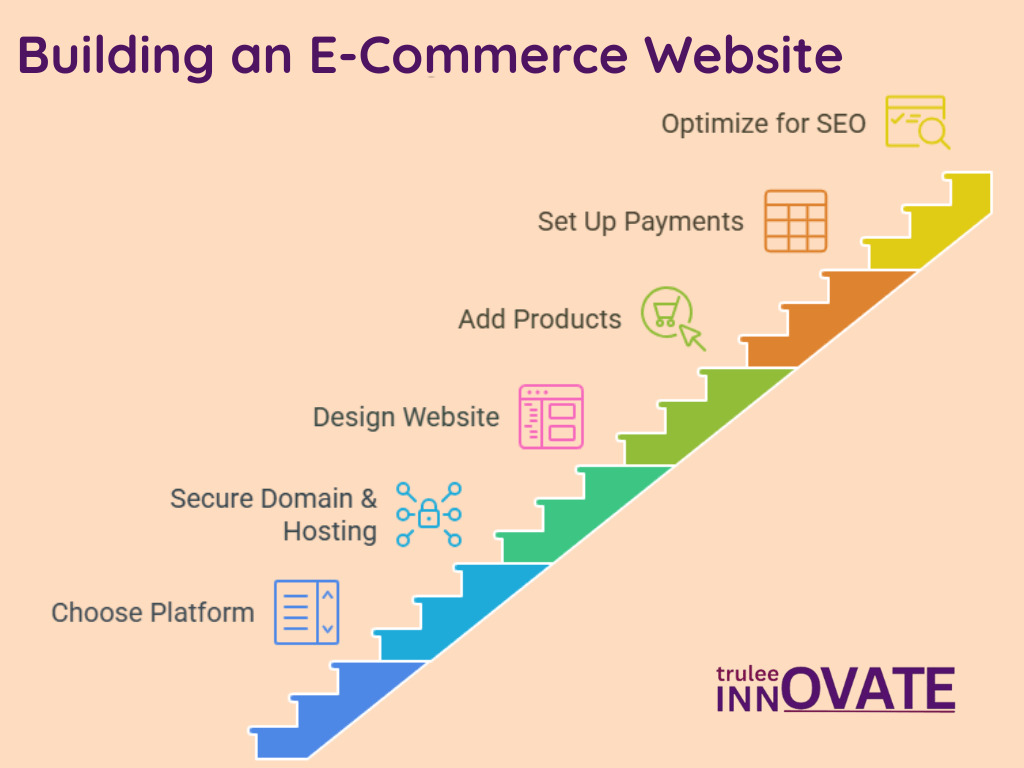Introduction
Imagine having a great business with amazing products to sell, but your website looks outdated, slow, or difficult to navigate. Customers visit but leave within seconds, and your sales remain low. In today’s digital world, having a visually appealing, fast, and user-friendly e-commerce website development is just as important as the quality of your products.
Your website is your digital storefront—the first impression that potential customers get about your brand. If it’s slow, cluttered, or confusing, they’ll quickly move to a competitor with a smoother experience. An effective e-commerce website should not only look great but also be optimized for performance, security, and seamless transactions.
Whether you’re building a new online store or improving an existing one, this guide will give you all the information that matches your needs will walk you through everything you need to know about e-commerce website development—from choosing the right platform and design strategies to SEO techniques and conversion optimization.
What is e-commerce website development?
E-commerce website development is the process of building a website that allows businesses to sell products or services online. Unlike traditional websites, an e-commerce site requires features like product catalogs, shopping carts, and secure payment gateways to ensure smooth transactions.
What is Full form of ecommerce?
The full form of E-commerce is “Electronic Commerce.” It refers to the buying and selling of goods and services over the internet, making it easier for businesses to reach a global audience.

How can I build an e-commerce website?
Many people often wonder, “How can I build an e-commerce website?” If you’re planning to start an online store but don’t know where to begin, here’s a step-by-step guide to help you create a successful e-commerce website.
1. Select the Right E-commerce Platform
Begin by choosing a platform that suits with your business requirments and technical expertise. Popular options include Shopify, WooCommerce (for WordPress), Magento, and Wix. These platforms offer user-friendly tools to help you set up and manage your online store efficiently.
2. Secure a Domain Name and Hosting
Your domain name (e.g., www.abc.com) is your store’s online address, so pick a unique, memorable, and brand-relevant name. If you’re using a self-hosted platform like WooCommerce, you’ll also need a reliable hosting provider such as Bluehost, SiteGround, or Hostinger to ensure your site runs smoothly.
3. Design a User-Friendly Website
Mobile usage is more in these days, so Choose a theme that works well on both desktop and mobile devices. Focus on intuitive navigation, clear product categories, and high-quality visuals to create an engaging shopping experience. A clean, eye chatchy, and responsive design is essential for attracting and retaining customers
4. Add Products with Compelling Descriptions
Upload your products with detailed descriptions, pricing, and high-resolution images. Explain product descriptions that highlight pros and cons and incorporate relevant keywords to improve SEO and attract potential customers with the images.
5. Set Up Secure Payment and Shipping Options
Trusting plays an important role here so Integrating trusted payment gateways like PayPal, Stripe, or Razorpay to ensure secure and hassle-free transactions. Configure shipping options, including delivery rates and locations, to provide a seamless checkout experience for your buyers.
6. Optimize for SEO and Marketing
Use SEO best practices such as creating SEO-friendly URLs, meta descriptions, and blog content to improve your store’s visibility on search engines. Promote your store through social media, email marketing, and paid advertising to drive traffic and boost sales.

E-commerce Website Development Cost in India
Building an e-commerce website in India can cost anywhere between ₹10,000 to ₹10,00,000, depending on the platform, design, features, and customization.
1. Basic E-commerce Website (₹10,000 – ₹50,000)
A simple website with a pre-designed template, essential features, and basic payment integration. Suitable for small businesses and startups.
2. Mid-Level E-commerce Website (₹50,000 – ₹2,00,000)
A more advanced website with custom design, better functionality, SEO optimization, and secure payment gateways. Ideal for growing businesses.
3. Advanced E-commerce Website (₹2,00,000 – ₹10,00,000+)
A fully customized platform with advanced features, high security, AI-driven recommendations, and seamless integration with third-party tools. Best for large businesses and enterprises.

Factors Affecting the Cost:
- Domain & Hosting: ₹2,000 – ₹10,000 per year
- Website Platform: Shopify, WooCommerce, Magento, or custom-built
- Design & Development: Pre-built templates vs. custom UI/UX
- Payment Gateway Integration: Secure transactions via Razorpay, PayU, etcSEO & Marketing: ₹10,000 – ₹50,000 per month for digital marketing
- Maintenance & Updates: ₹5,000 – ₹50,000 per year for security and improvements
Investing in a well-developed e-commerce website ensures better user experience, higher sales, and long-term success. Choose wisely based on your business needs!
Conclusion
E-commerce website creation is a complex process that covers everything from picking the correct platform to optimizing for SEO and guaranteeing a great user experience. By following best practices and focusing on your business goals, you can establish an online store that draws traffic


